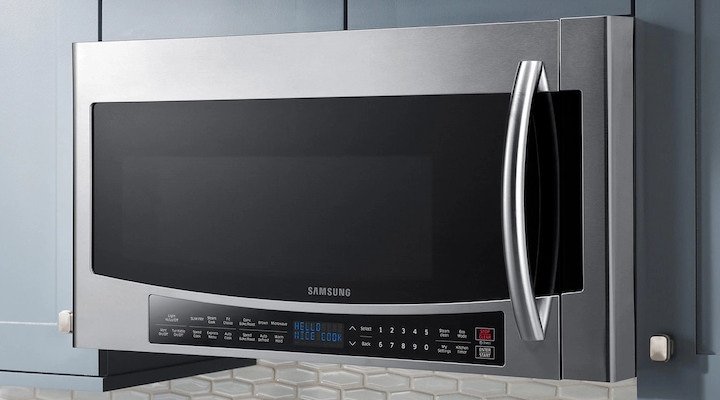
Here’s the deal. The E3 error code on a Samsung microwave generally points towards a temperature sensor issue. It’s like when you’re driving and your check engine light suddenly comes on. Sure, your car might still run for a bit, but ignoring it could lead to bigger problems down the road. The same goes for your microwave. While it might still function with the E3 code flashing, it’s signaling a glitch in the system that needs attention.
Understanding the E3 Error Code
Ok, let’s break down this E3 error a bit more. In simple terms, it’s like your microwave’s way of saying, “Hey, something’s wrong with how I’m sensing heat.” Microwaves aren’t just magic boxes that heat your food — they rely on a series of sensors and circuits to ensure everything runs smoothly and safely. The E3 error specifically indicates that the temperature sensor, which helps regulate the heat inside the microwave, isn’t doing its job right.
Imagine if you were baking a cake and didn’t have a thermostat to monitor the oven’s temperature. You’d just be guessing if it’s too hot or not hot enough, right? That’s what happens when the temperature sensor isn’t working correctly. It can result in undercooked or overcooked meals, and in some cases, could potentially become a safety hazard. So while your microwave might still power on, using it without fixing this issue is like baking blindfolded.
In most cases, the E3 error pops up when the microwave detects a problem with its internal temperature reading. This could be due to a faulty sensor, a loose wire, or even software glitches that confuse the control board. Understanding this will help you see why it’s important not to ignore the error code. Fixing it not only saves the microwave from further damage but also prevents inconvenience and potential safety risks in your daily cooking routine.
Causes of the E3 Error Code
So, you might be wondering, what exactly triggers this pesky E3 error code? There are quite a few usual suspects. First up, let’s talk about the temperature sensor itself. Just like any other electronic component, sensors can wear out over time. Think of it like a pair of headphones that suddenly start producing crackling sounds — sometimes, they just need a little TLC, or a full replacement if they’re too far gone.
Another frequent culprit is the wiring connected to the sensor. If these wires become loose or damaged, it can disrupt the communication between the sensor and the microwave’s control board. Imagine trying to have a conversation on a staticky phone line — messages get mixed up or lost entirely. In such cases, your microwave doesn’t get the accurate temperature readings it needs to function properly.
Lastly, software issues can also be at play. Occasionally, glitches in the microwave’s programming can cause the E3 error to appear even if the hardware is fine. It’s like when your computer randomly freezes for no apparent reason and needs a restart. Sometimes, a simple reset of the microwave can clear up these glitches. However, if the error persists, it’s a sign that there’s a more serious underlying problem that needs professional attention.
Resolving the E3 Error Code
Alright, so how do you go about fixing this issue? First things first, let’s try a simple reset. Unplug your microwave, wait for about 10 minutes, and plug it back in. This might clear any minor glitches causing the error. If the E3 code is still there, it’s time to dig a little deeper, potentially with expert help.
If you feel comfortable and have some experience with appliances, you can try inspecting the temperature sensor and its wiring. Make sure the power is off before you start poking around. Check for any visible signs of damage or loose connections. It’s similar to checking if a lamp isn’t working because it’s not plugged in properly. If there’s visible damage, or if everything seems in order yet the error persists, it’s likely a sign that you need a replacement sensor or professional repair.
Now, if DIY isn’t your thing, that’s perfectly fine. A certified technician can easily handle these repairs. It ensures the job is done safely and correctly without the hassle of trying to figure out the innards of your microwave. Plus, having a professional service your appliance usually extends its life.
Preventive Measures and Final Thoughts
Let’s talk prevention. While it’s not always possible to avoid electronic hiccups, there are steps you can take to minimize them. Regular maintenance is key. Think of it as taking your car for an oil change — it keeps everything running smoothly. Keeping your microwave clean and ensuring it’s used in accordance with the user manual can help prevent many issues.
Avoid slamming the microwave door, as this can jostle internal components, and try not to overload your microwave with heavy items. Remember, your microwave is an electronic device, much like your phone or computer. It benefits from a little caution and care in daily use.
In conclusion, while you might be tempted to ignore the E3 error code if your microwave seems to be working, it’s crucial to address it sooner rather than later. By understanding the error, identifying potential causes, and knowing when to call in a professional, you’re taking steps to ensure your microwave remains a trusty kitchen companion. So next time you see that E3 code, you’ll know exactly what to do!